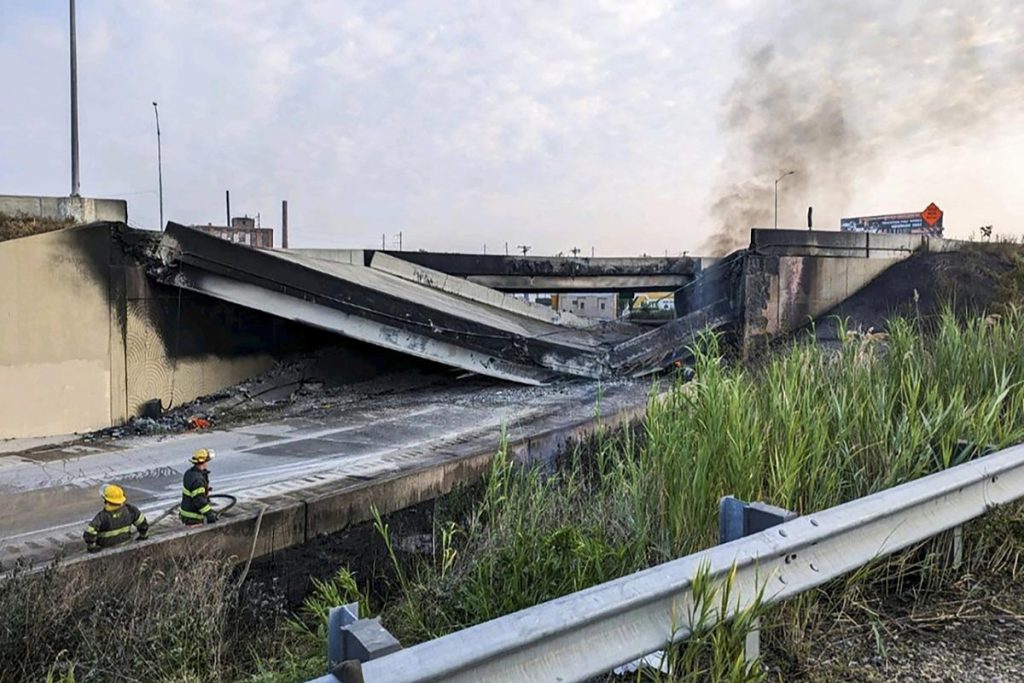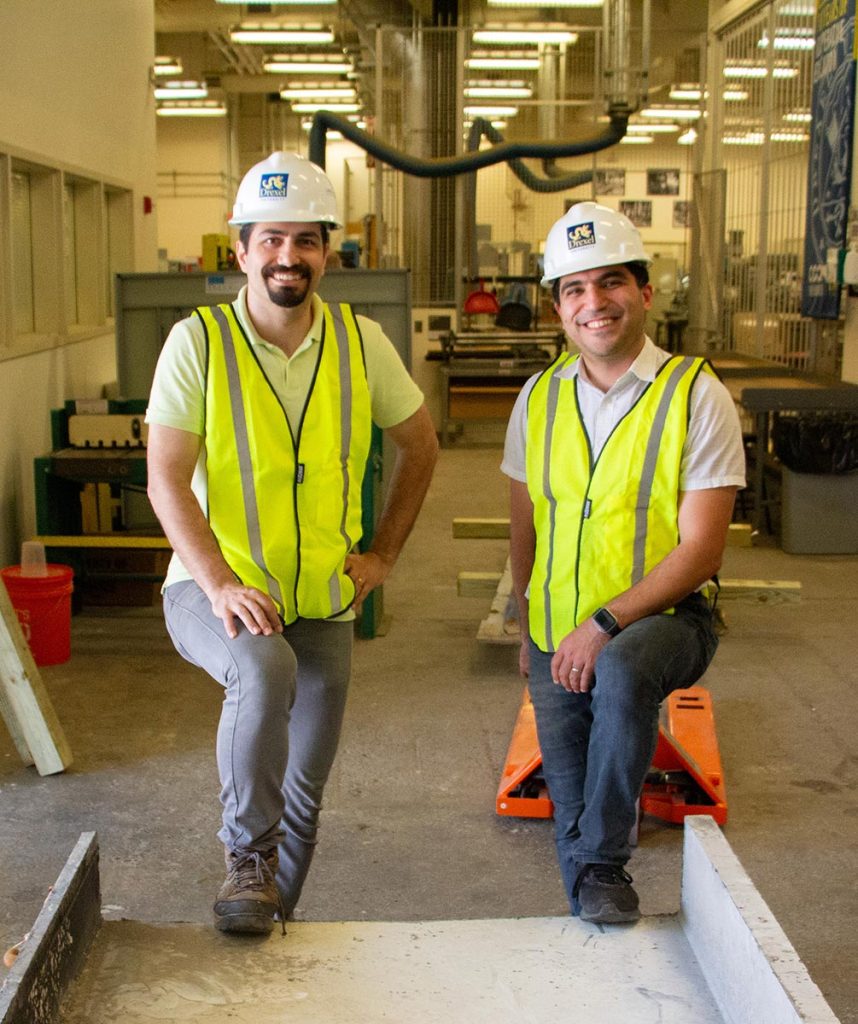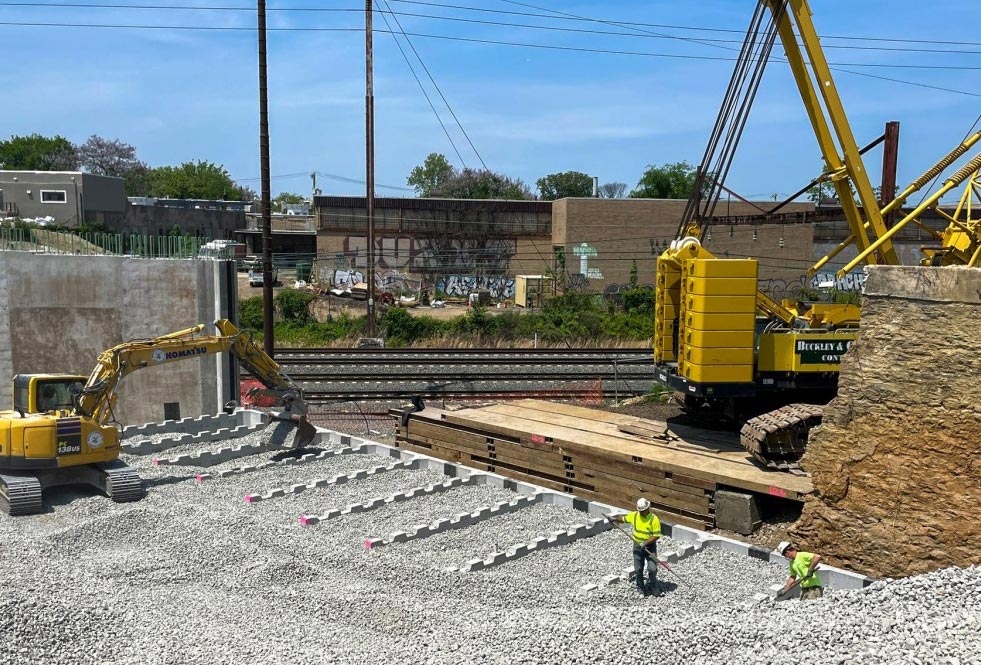On the morning of Sunday, June 11, a gasoline tanker tipped over and caught fire at the Cottman Avenue exit of Interstate 95 Northbound.

The resulting fire weakened the steel girders supporting the highway above, causing it to collapse. I-95, a crucial artery for both local traffic and regional commercial travel, was closed for 12 days while workers raced to build six lanes of raised road so that vehicles could use the road while permanent bridge replacement is constructed. In the days, weeks and months since the incident, Drexel engineers have embraced the challenge of explaining the reasons for the collapse, learning from what happened and even rebuilding the road.
Engineers Explain
Civil, architectural and environmental engineering faculty Amir Farnam, PhD, associate professor; Abieyuwa Aghayere, PhD, professor; and Robert Swan, PhD, teaching professor, provided valuable context to the event in local and national media appearances, including on Philadelphia’s Fox29 and 6ABC, in The Washington Post and The New York Times and for the Associated Press. They explained how most raised sections of road aren’t protected against fires like the one caused by the accident, due to the rarity of such events and the specific conditions that would need to be met to weaken the structure to the point of collapse.
Road Sections Bolster Teaching, Research

Farnam and Arvin Ebrahimkhanlou, PhD, assistant professor, worked with officials at the Pennsylvania Department of Transportation to secure two sections of road – a bridge girder and diaphragm – that were affected by the tractor-trailer. The road sections are being housed at Drexel Engineering, offering researchers and students a unique chance to learn from the incident.
“From a research perspective, by looking at the deformed girder, we will be able to assess its condition,” Ebrahimkhanlou said. “This will provide valuable visual clues that can help machine learning-based visual inspections recognize when a bridge is at risk.”
Farnam added that the section could be used for materials research. “There is still concrete and rebar attached to the girder,” he said. “We can look at samples on a microscopic level to determine their material makeup and how the fire affected them, giving us insight into what compositions can withstand what temperatures.”
The sections will also act as a powerful teaching tool for undergraduate students. “You don’t typically get to see a massive piece of road like this,” Ebrahimkhanlou said. “Students from across the college will get a chance to see the damage up close, leading to conversations among structural engineers about how the bridge was designed; among architectural engineers and materials scientists about what was used to build it; and among civil engineers about the impact on traffic, commerce, the local neighborhood and so on.”
Understanding the Impact
Zhiwei Chen, PhD, assistant professor, was awarded an NSF Rapid Response Research grant to study the effect that the collapse, closure and continuing roadwork have on commuters’ attitudes toward public transportation.
In the days after the incident, the Southeastern Pennsylvania Transportation Authority (SEPTA) announced increased capacity on its regional rail lines that travel between the area north of Cottman Avenue and Center City Philadelphia. Using ridership data from SEPTA, GPS requests collected from services like Google Maps, and surveys of people using the trains, Chen and his students hope to understand whether the incident drew more people to public transportation and whether they stuck with it after the road reopened.
“We already have a good idea of what incentivizes or disincentivizes commuters from using public transportation on a daily basis,” Chen said. “Factors like crime, cleanliness, frequency of service and reliability can make the difference between deciding to drive or to use transit. We want to know if the increased capacity offered by SEPTA led to any lasting interest in the service and what SEPTA could do to keep their business, reducing traffic on the roads.”
Alumnus’ Aggregate Company Creates “Backfill” to Rebuild Road

Aero Aggregates of North America, an Eddystone, Pennsylvania-based company under the direction of Drexel alumnus Archibald S. Filshill, civil engineering ’95, PhD civil engineering ’10, was at the center of the ambitious plan to reopen part of I-95 within just two weeks of its collapse.
Using recycled glass destined for landfills, the company creates a lightweight, pebble-shaped glass aggregate that is six times lighter than the same amount of soil. The material was selected to protect the sewer lines underneath the site, which were not designed to withstand the pressure of that much weight.
Filshill, who earlier in the year was elected as the 2023 Delaware Valley Engineer of the Year by the Engineers’ Club of Philadelphia, said that the project carried special meaning to him as a Philadelphia native.
“As a Philadelphia-based company, we understand how vital I-95 is for the transportation of people, goods and services in the region and the whole east coast,” he said in a press release. “We’re honored that our foamed glass aggregates are playing such a significant role in the restoration of this essential transportation corridor.”
Over 8,000 cubic yards of foamed glass aggregate was used to rebuild the collapsed portion of road, reusing the equivalent of approximately 6.5 million 12-ounce glass bottles.

